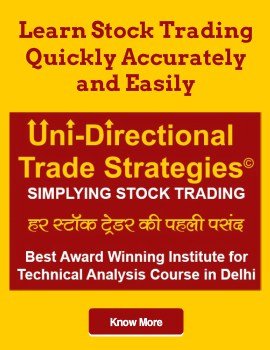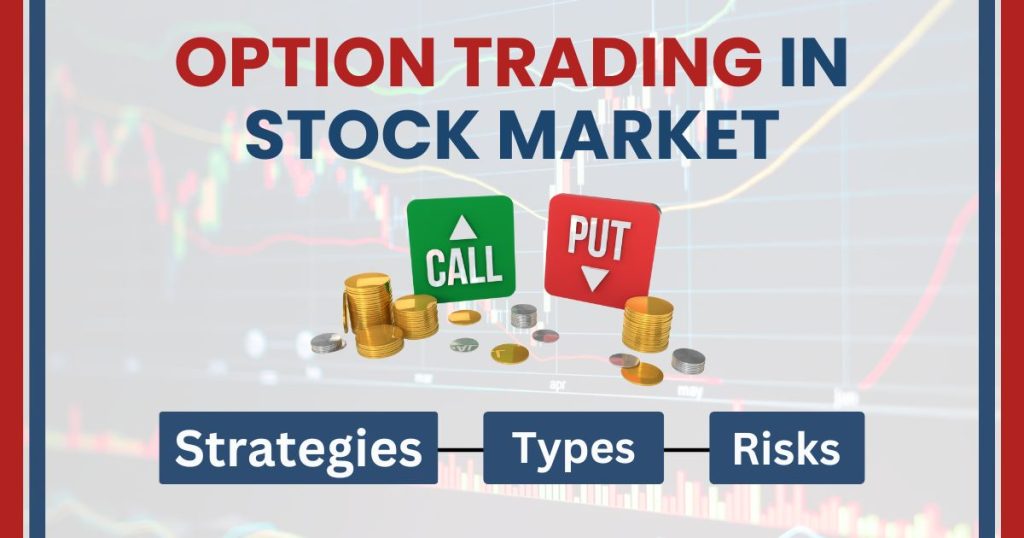The stock market trading strategies for beginners is a new way of looking at the stock market and where all of us can make some money. If you want to make some money from the stock market, you have to get into the right mindset or you will get fed up with the whole process pretty quickly. These stock market trading strategies for beginners will get you off to a good start.
Stocks are volatile. Stocks spend some time in uptrend trade and downtrend trade. Usually, stocks move sideways. A profitable strategy will help you make money, thereby helping to improve personal finance. It doesn’t matter if you are a swing trader, positional trader, or day trader. Thus, you should always select an appropriate strategy at a time.
Stock Trading Strategies Definition: Stock trading strategies are a discipline of finance. According to Wikipedia, “a trading strategy is a fixed plan that is designed to achieve a profitable return by going to long- term or short term trading markets”.
A stock market beginner constantly searches for answers to basic questions. Here are a few general stock trading concepts everyone should know:
Table of Contents
ToggleWhat is stock trading?
Stock trading is one of the most popular ways to make money in the market. It is also one of the most popular ways to lose money in the market. To trade in stocks you will need to learn about the stocks market and the stock market trading terms and rules.
Stocks are like pieces of ownership of your company or parts of it. When you purchase stocks, you are putting part of your financial future in the company; if the company is profitable, your stocks will increase in value.
What are stock trading strategies?
Stock trading is a process of buying and selling stocks to capitalize on daily stock price fluctuations. Investing in stocks can help you make a few penny stocks in minutes, hours, days, or months. Conversely, you can also lose money due to market uncertainties when the price of a share falls. Ideally, you need a strategy before investing or trading in stocks. A profitable stock trading strategy will help you gain and minimize the risk to lose.
Stock trading is further divided into active trading and day trading. An active trader is an investor who trades per month. Usually, an active trader largely depends on a day trading strategy that relies on market timing that tries to benefit from short-term events. Whereas a day trader is involved in buying and selling stocks in a single day. The main aim of a day trader is to make maximum profit in a single trade.
What is the stock market rotation?
Stock rotation happens when a trader moves their money from one sector to another, one country to another, or out of the market into cash, bonds, or real estate. A stock rotation strategy involves moving money in an attempt to beat the market.
If you are trying your hands on investing in stock market trading, keep it simple with these trading strategies. These trading strategies are a mix of a low-cost index to achieve long-term profitability.
Why do you need a stock trading strategy?
The stock market is constantly changing its behavior so your strategies should evolve constantly. A profitable stock trading strategy guide is imperative for every professional trader or investor. A serious trader always prepares several trading strategies parallel to competitive market situations. Your strategies should define the use of the best market trend and situations. You need to utilize a proper trading strategy to earn profits.
Verify the strategy reliability
A properly verified trading strategy is crucial to surviving the financial market competition. Any professional trader is doomed to fail if they adopt a plan which is based on a different asset with a lack of a proven trading system tested. Therefore, a systematic approach is the way to go.
Quantify to measure performance
A trader will be able to measure, besides, will be able to maximize performance. Chaotic trading with a lack of share trading plan leaves no opportunity to perform high. Incorporating a trading system for a prolonged duration will allow building a statistical database. Thus, gauge performance once the assessment is done.
Helps to make consistent profits
Sticking to trade allows you to remain focused on the hung inflow of economic data through modes like youtube, news, company balance sheet.
Define objective to develop discipline
Overtrading can result in loss of money management. Without a proper trading system with clearly defined trading strategies entry and exit rules, a trader can fall into a frenzy position. Stock trading strategies for beginners tips will allow traders to initiate more trades.
Generally, if you ask a trader which stock trading strategy guides to choose from. Everyone is likely to have different answers based on their personal finance experience. Pointing to that, we have listed a few characteristics which a typical trading strategy should have.
Now, let’s dive into the winning trading strategies for all time:
10 Stock Trading Strategies
It seems like a simple question, but the answer can get more complicated as you begin. Earning profit from stock trading is a prime goal of every trader or investor. If you are a passionate trader you should have prepared several trading strategies for different market situations. Here is a list of the 6 Best Stock Trading Strategies:
# 1 Uni-directional Trade Strategies
When you are getting started, it can be hard to find solid strategies to help you get ahead of the game. But with Uni-Directional Trade Strategies there are many different ways to take advantage of how the stock market moves! These are great for people who are just getting started learning how to trade stocks and help them get over the initial fear that stock trading may carry. The strategies are easy to learn and simple to apply even when you’re in the midst of a market crash! It is one of the most popular and easy-to-understand stock trading strategies for beginners. It teaches 9 bunch of parameters to trade in the market with accuracy and gain strategy.
Besides UDTS there are several traditional strategies a beginner must know mentioned below.
# 2 Growth Investing
Growth Investing is a style of investment gaining attention from many investors. Its focus is on the growth of an investor’s capital. Thereby, applied when companies continue to grow their profits. Companies reinvest profits back instead of using cash flow to improve operations as well as to entice investors with a dividend. Typically, in exchange for forming a dividend, investors expect that share price and profits will increase. Therefore, growth investing is most successful when investors determine that profits can be easily supported by driving efficient sales.
# 3 Income Investing
Income investing is an act of picking up a good stock by putting together a collection of an asset. For instance, stocks, mutual funds, real estate, and bonds generate the maximum annual income at the lowest risk possible. However, most of the income is paid to investors for everyday use. Especially, during an uncertain economic market situation.
# 4 Short Selling
Short selling is also referred to as shorting or going short. It means the sale of securities that a seller has borrowed to make a short sale. This type of trading strategy produces profits in a declining stock market. The method includes borrowing equity shares from a broker, selling them, and then selling the stock to return. Although the approach can be trading challenging for an average trader.
# 5 Value Investing
Value investing is an investing strategy where stocks are identified which appear to trade for less than their intrinsic value. Unlike other investment strategies, value investing is simple. Investors buy shares and hold until the market price rises. Thus, this strategy is successful when the stock market’s volatility is low.
# 6 Momentum Investing
Momentum investing is an approach to buy securities that offer high returns over the past 2 to 12 months, and selling that has poor returns over the same time. Momentum trade involves long-going stocks and future ETFs showing upward trending prices. Furthermore, it includes disproportionately trading in stocks with high bid spreads, thus, it is important to evaluate momentum profitability when taking transactional cost into account.
# 7 Quality Investing
Quality investing is an investment strategy based on clearly defined fundamental criteria that help to determine companies with outstanding quality characteristics. In simple words, it is a quantitative investment approach that focuses on buying a high-quality company. The quality assessment is made with both soft and hard criteria. Thus, a quality investing strategy is the best in the class approach.
# 8 Trend Following
Trend following is another trading strategy that simply rides the trend. According to the trend, followers buy when the price is going up and sell when the price starts to move down. In this strategy, a successful trader does not aim to predict the market price, but simply keeps on an emerging trend.
Moreover, several mathematical calculations and factors must be used to determine the stock moves. This will allow you to generate trade signals, calculate a current market price, moving averages, and channel breakouts. Therefore, the application of different techniques and time frames a trend follows can identify trends.
# 9 Gap Strategy
According to StockCharts.com, “trading is a simple and disciplined approach to buying and shorting stocks. Essentially, one finds stocks that have a price gap from the previous close, then watches the first hour of trading to identify the trading range. Rising above that range signals a buy while falling below it signals a short.”
The gap is classified as Breakaway Gaps, Exhaustion Gaps, Common Gaps, and Continuation Gaps. An analyst studies factors of gaps and accurate identification of trade results in a high probability of success.
# 10 Flag Pattern
A flag pattern is a chart pattern that is based on price action. It comprises a small rectangle created via minor profit booking in eight uptrends or downtrends. Conversely, there are several pressure areas in a stock chart by a trader to book profit. However, trends remain unchanged. This may result in small swing trades where the price remains flat. Both support and resistance lines are downward sloping in an uptrend and upwards in a downtrend.
How to build an effective stock trading strategy?
Creating a winning stock trading strategy is a great way to grow your finances. You can use a variety of investment strategies to help you grow your wealth, but all of them have one thing in common. They all have a strategy to help you choose the right stock to buy. This blog will show you how to create an effective stock trading strategy. Every trading strategy requires three ingredients to achieve success. Here are 3 tips on how to build effective stock trading strategies for beginners.
1. Understand which asset to trade
Knowing what asset to trade is very important. Understanding what asset you want to trade will help you determine its volume, volatility, and liquidity. Few common trade assets are forex, stocks, equity, options, indices, commodities. Moreover, there is a lot to know about each market but one cannot start trading unless you choose your trading market.
2. Mapping profitable entry/exit point
Even with the right market context, you need to trigger entry and exit points. Few useful triggers like bars, candlestick patterns, RSI, oscillators, and indicators help to identify entry and exit triggers. Thus, causing you to decide with confidence.
3. Define your risk
Once you define entry and exit trading rules, you can now limit your risk. Primarily you need to position sizing for a given setup. Your position trade defines how much money you can put in to take a risk. Subsequently, doubling your position sizes will double your risk.
Two different aspects of stock trading strategies
Every trading strategy is based on aspects of technical analysis and fundamental analysis.
Technical Analysis
Technical analysis is another stock trading strategy. Many technical analysts highly favor a technical approach to determine price movements. Using various chart patterns and technical tools & indicators to evaluate asset value. Few trend indicators you need to keep an eye on are moving averages, Bollinger Bands, Moving Averages Convergence Divergence (MACD), Relative Strength Index (RSI), On Balance Volume (OBV).
Moving Averages most commonly used technical indicators for validating market movements. Other indicators have proven to be definitive, practical, and unbiased. Moving average prices can be found in many trading platforms like Stock Screener.
On Balance Volume (OBV) is the best indicator for day trading bitcoin. Typically, it is used to analyze the total flow of money in an asset. Simply, it is the measure of money going in and out of the share market. OBV can be found on platforms like MT4 and Tradingview. Nonetheless, this is true for cryptocurrency trading strategies.
Fundamental Analysis
Fundamental analysts observe fundamental indicators of the economy. As a result, to understand whether a currency is overvalued or undervalued, and how it is related to another asset class. Nevertheless, fundamental analysis is complex as it involves a diverse study of economic elements that indicate future trade and investment trends.
As a stock market beginner, start with basics by analyzing securities inflows and outflows. These are often published by the nation’s banking sector. Moreover, an analyst may rely on data releases and news from the contrary future trend. Fundamental analysis is used for reading assets where supply and demand balances are critical factors that alter the trend. For example crude oil, where you are required to read oil price action.
Performance Measurement- How To Verify A Trading Strategy?
The performance of a trading strategy is measured based on risk. There are several risk management performance measure strategies like Sharpe Ratio. However, to compare expected return against return volatility you can use Maximum Drawdown.
The selection of risk-reward trade-off certainly depends on trade risk preferences. The performance is measured against the benchmark. This is a common exchange-traded stocks fund on a share index.
Backtesting
Backtest trading strategies are a process of applying a strategy to historical data to evaluate trading performance. The method offers analysts, investors, and traders to determine their trading strategies and analytical model.
Paper Trading
Paper trading is a simulated approach. It allows investors to practice securities exchange without risking real money. An intermediate trader can make a paper trade and record them to measure their hypothetical trading positions. Similarly, help in portfolio management.
Which is the Best Stock Trading Strategies For Day Trading?
Day trading (also known as Intraday Trading) is an act of buying and selling securities within the same day. Taking advantage of fluctuating price movements is a lucrative game. If played correctly, it can yield a huge profit. While for beginners, it may lead to losing money. Thereby, you need a well-thought Day Trading Strategies For Beginners.
Some popular day trading strategies include trend following, contrarian investing, trading on the news, and scalping. Day trading is hard to master. It requires skill, time, and knowledge. Learn to create a trading plan with IFMC Institute Uni-directional Trade Strategies Course. This online course is taught by Manish Taneja, a senior research analyst who has experience trading at Wall Street.
Which is the Best Stock Trading Strategies For Options Trading?
Options strategies are a little different from other assets. It includes many strategies that limit risk and maximize return. However, a trader with little effort can learn to take advantage of power and flexibility.
Some popular options trading strategies are Covered Call, Buy-Write, Bull Call Spread, Married Put, Bear Put Spread, Protective Collar, Long Straddle, and Iron Condor.
Traders often jump into trading options with little understanding of options strategies. There are many strategies available that limit risk and maximize return. With a little effort, traders can learn how to take advantage of the flexibility. With this in mind, we’ve put together this primer, which should shorten the learning curve and point you in the right direction.
The Options Trading Strategies Course by Mr. Mnaish Taneja (Research analyst at IFMC Institute) is very popular. It is a simple practical-based course to learn options trading for beginners.
Where To Learn Trading Strategies for the Indian Stock Market?
An effective approach to master share trading is through learning an easy way out. IFMC institute offers unique stock trade courses for beginners to advanced traders.
Uni-Directional Trade Strategies is a systematic approach for traders. The trading strategy is a detailed and definitive set of rules. Subsequently, the rules target traders through the trading process in addition to entry/ exit techniques. UTS approach defines 6 sets of rules and regulations. Help a trader to increase the probability to win stocks. Learn more: Why UDTS is the best to stock trading strategies
Alongside, outline risk and reward parameters established through the outset. Here are 9 rules:
- Disciple for your categories
- No emotions only chart
- Be in trend always
- Hedge your position always
- Patience in favorable trades only
- Averaging only up to stop loss
- Always follow certain profit style
- Only invest in quality trader with %100 confidence
- Risk management
Conclusion
Traders have countless strategies at their disposal. Aforementioned, trading strategies must be employed by both active traders and day traders. Indeed to interpret price movements and take advantage of trading positions. Some traders approach the market exclusively. Only a few incorporate hybrid strategies mentioned above.
However, none of the strategies works each time, traders may find it uses an alternate Uni-directional trade strategy to secure a 100% success rate. UDTS offers guaranteed success. Traders can familiarise UDTS to build an arsenal of tools available for adapting market conditions.





















